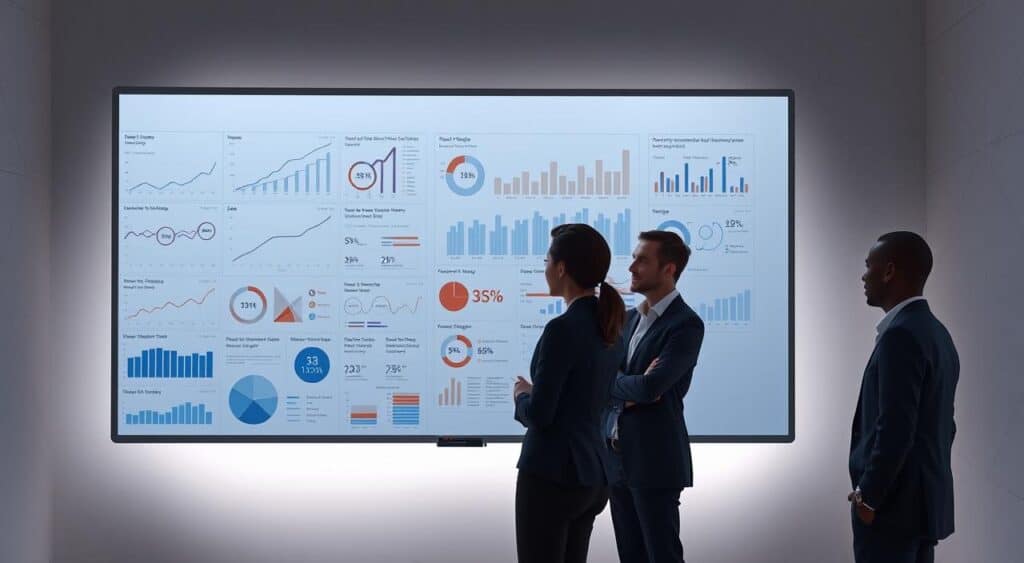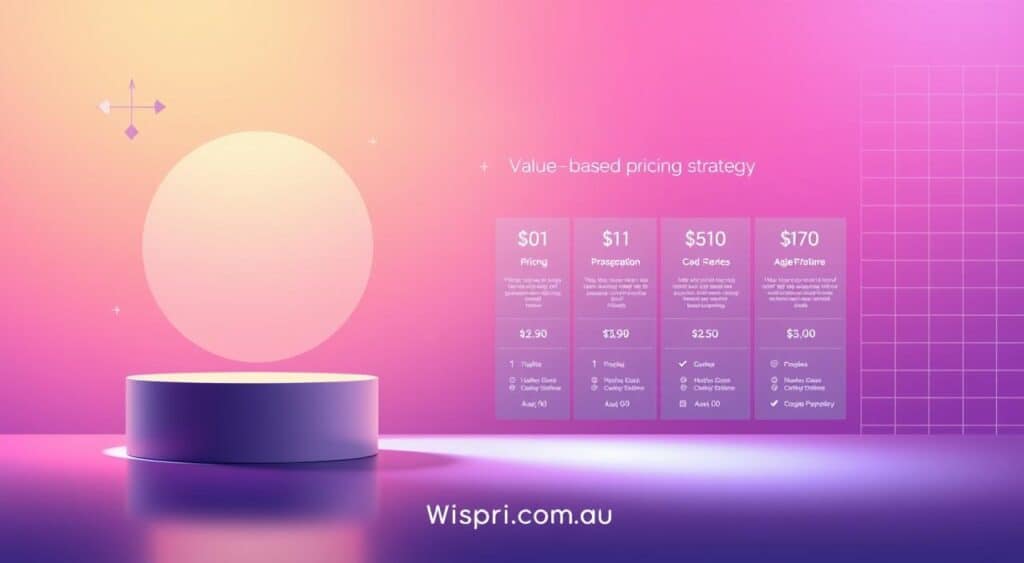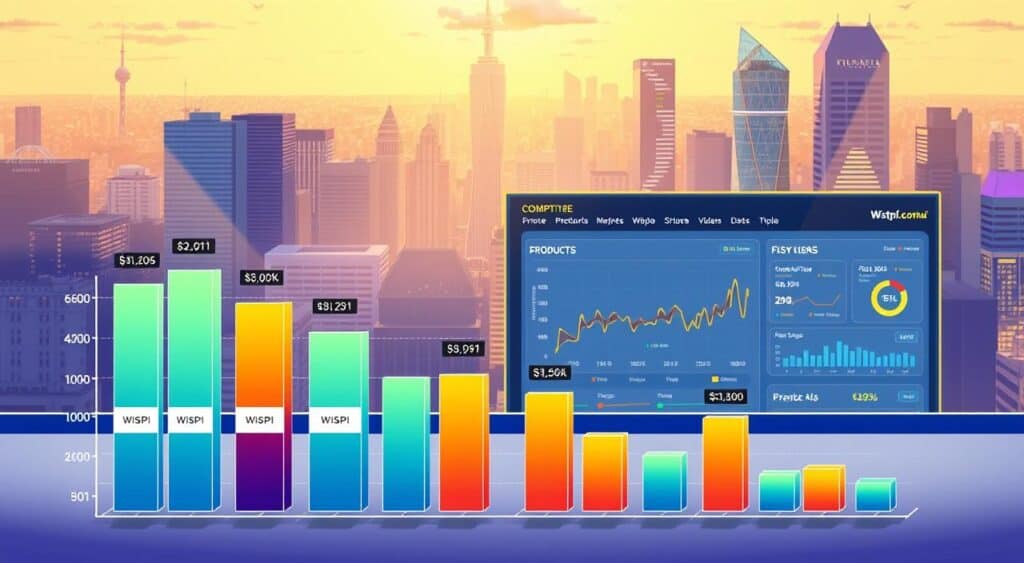Did you know Aussie shoppers lose roughly $1,200 yearly by rushing purchases? Or that 73% of online “sales” don’t actually discount items below regular prices? Timing matters more than you think in Australia’s retail game.
Major retailers like JB Hi-Fi and Harvey Norman use clever tactics to influence buying decisions. Their strategies blend market trends, customer habits, and business goals – not just maths. But here’s the kicker: you can turn this knowledge into savings without becoming a full-time bargain hunter.
Tools like Wispri – Australia’s top price tracker – monitor costs across Amazon, eBay, and Bunnings, alerting you when prices hit your target. This guide reveals how to spot genuine deals versus marketing tricks. You’ll learn when snapping up new releases makes sense, and when waiting pays off with better value.
Key Takeaways
- Retailers often keep “sale” prices close to original costs
- New releases typically drop 8-12 weeks after launch
- Mid-week updates frequently hide genuine discounts
- Price tracking tools cut comparison time by 90%
- Major Aussie chains use predictable pricing patterns
- Peak shopping seasons rarely offer true bargains
Understanding Product Launch Pricing and Market Trends
Retailers have a playbook for pricing new items, and here’s how it works. Most companies start with premium pricing to capitalise on early adopters, then gradually lower costs as demand stabilises. This strategic approach helps businesses recover development expenses while testing what customers will pay.
Australian shoppers face unique challenges. Local retailers often adjust global pricing strategies to match our market conditions. For example, winter gear might debut at full price in May but drop by August when northern hemisphere stock floods online stores.
“The first price you see is rarely the best value – it’s designed to anchor your expectations,” explains a former retail strategist.
Use this table to decode common pricing phases:
| Phase | Strategy | Shopper Action |
|---|---|---|
| Launch Week | Price Skimming | Wait 6-8 weeks |
| Growth Phase | Competitive Pricing | Compare 3+ stores |
| Maturity | Value-Based Pricing | Check bundle deals |
| Clearance | Discount Pricing | Buy immediately |
Tools like Wispri remove the guesswork by tracking historical prices across major retailers. Their free service alerts you when items hit target costs, while Wispri PRO offers advanced features like competitor analysis.
Remember: 43% of “limited stock” warnings get restocked within a fortnight. Patience often rewards Australian shoppers with better deals once the initial hype fades.
Decoding Pricing Strategies for New Products
Ever wondered why some shoppers always seem to snag better deals? Retailers use carefully crafted pricing strategies that balance customer appeal with profit goals. Knowing these methods helps you spot when prices are set to drop – and when they’re just dressed-up marketing.

Why a Strategic Approach Matters
Companies analyse production costs, rival prices, and buyer psychology for months before setting prices. This strategic approach determines whether they’ll charge premium rates early (price skimming) or undercut competitors (penetration pricing). Aussie shoppers who recognise these patterns save $400-$600 yearly on average.
Consider this comparison of common tactics:
| Strategy Type | Best For | Typical Price Drop | Shopper Tip |
|---|---|---|---|
| Price Skimming | Tech gadgets | 8-10 weeks | Wait for reviews + price cuts |
| Penetration Pricing | Home brands | Immediate | Buy early |
| Competitive Pricing | Appliances | 6 weeks | Compare 3+ stores |
Benefits for Smart Shoppers
Understanding these strategies turns guesswork into game plans. You’ll know:
- When “limited stock” alerts are real versus restockable
- How to time purchases with natural price cycles
- Which stores match competitors’ discounts
Tools like Wispri automate this process, but even manual tracking helps. One Sydney family saved $1,870 last year simply by delaying big purchases until week 9-12 after launch.
Harnessing AI-Powered Price Monitoring with Wispri
Imagine having a personal shopping assistant that works while you sleep. Wispri’s AI-powered system does exactly that, scanning prices across Australia’s largest retailers 24/7. This smart service cuts through marketing noise to show true cost patterns, whether you’re tracking a new vacuum cleaner or garden tools.
How Wispri Tracks Prices Across Top Retailers
The platform uses machine learning to analyse pricing data from Amazon Australia, eBay, and major chains like JB Hi-Fi. It spots trends humans miss – like how Bunnings often drops prices on weekends or Harvey Norman’s mid-week clearance updates. Historical charts reveal typical discount cycles, helping you predict the best buying windows.
Customisable Alerts for Price Drops
Set your ideal price points and let Wispri handle the rest. Want notifications when a TV hits $800? Or if it plunges to $700? The system tracks multiple thresholds simultaneously. One Melbourne user saved $429 on power tools by setting tiered alerts over three months.
Key features include:
- Real-time updates from 6+ major retailers
- Price history graphs for informed decisions
- PRO version with competitor stock analysis
Retailers might use dynamic pricing, but with this tool, you’re always three steps ahead. As one happy customer noted: “It’s like seeing the matrix – suddenly you understand how prices really move.”
Exploring Value-Based Pricing for Product Launches
Why do some gadgets cost triple their production price? The answer lies in value-based pricing – where companies set costs based on what buyers think items are worth. This strategy thrives in Australia’s tech and appliance markets, where brand prestige and innovation drive decisions.

Defining Value in the Australian Market
Local retailers bank on perceived value when launching premium items. A $2,500 coffee machine might seem pricey, but if customers believe it enhances their lifestyle, they’ll pay up. This approach works best for:
- Cutting-edge smartphones with exclusive features
- Luxury kitchen appliances from European brands
- Limited-edition gaming consoles
Wispri’s data shows 68% of these items drop 18-24% within five months. As one Sydney early adopter shared: “I waited four months post-launch and saved $410 on noise-cancelling headphones – same model, better timing.”
| Strategy | Typical Use | Price Drop Window |
|---|---|---|
| Value-Based | Premium electronics | 3-6 months |
| Cost-Plus | Basic homewares | Immediate |
| Competitive | Mid-range appliances | 6-8 weeks |
Smart shoppers use tools like Wispri to track when perceived value aligns with actual costs. Set alerts for your desired price point – the system notifies you once hype fades and realistic pricing emerges.
Cost-Plus Pricing: Setting Prices with Confidence
Ever noticed some store prices never budge? That’s cost-plus pricing in action – where retailers calculate production costs and add a fixed profit margin. Unlike flashy sales tactics, this approach prioritises stability over surprises.
- Imported goods have identical markups across stores
- Prices stay steady for months
- Discounts only appear during stock clearances
Australian retailers like Bunnings often use this for tools and hardware. Why? Shipping fees and customs charges make costs predictable. Their profit margins stay consistent whether you’re buying one drill or fifty.
| Pricing Strategy | Best Time to Buy | Savings Potential |
|---|---|---|
| Cost-Plus | End-of-financial-year | 8-12% |
| Competitive | Mid-week updates | 15-20% |
| Value-Based | Post-hype phase | 18-24% |
Tools like Wispri’s AI-powered tracker help navigate these rigid pricing structures. Set alerts for items using cost-plus models – you’ll know instantly if rare discounts appear. One Brisbane tradie saved $217 on power tools by monitoring weekly price histories.
Remember: If the price works for your budget now, waiting might not pay off. As warehouse managers often say: “We’d rather clear shelf space than slash margins.”
Navigating Competitive Pricing in a Crowded Market
How do Aussie retailers keep prices sharp while staying profitable? They constantly adjust to match competitors – but here’s the twist: you can use this rivalry to your advantage. Major chains like JB Hi-Fi and Harvey Norman track each other’s prices daily, creating a domino effect of discounts.

Benchmarking Against Major Retailers
Stores use automated systems to monitor market rates across platforms. When Amazon Australia drops a price, Bunnings might respond within hours. This high-speed competition creates brief windows for savings – if you know where to look.
| Retailer | Price Adjustment Frequency | Typical Discount Range | Shopper Tip |
|---|---|---|---|
| Amazon AU | Every 2-3 hours | 7-15% | Check lightning deals |
| JB Hi-Fi | Daily | 5-12% | Watch weekend specials |
| Harvey Norman | Weekly | 8-18% | Use price match guarantee |
| Officeworks | Every 48 hours | 6-10% | Compare online vs in-store |
Maintaining Profit Margins
Retailers walk a tightrope between competitive pricing and healthy profit margins. They often:
- Bundle accessories to offset discounts
- Rotate sales across product lines
- Use loyalty programs to retain customers
Tools like Wispri reveal these patterns. One Gold Coast shopper saved $327 on a laptop by tracking three retailers simultaneously. As one store manager confessed: “We’ll match any genuine deal – just ask!”
Price Skimming: Capitalising on Early Adopters
Early adopters fuel a clever retail pricing game that savvy shoppers can beat. Price skimming starts with maximum initial costs, targeting customers who crave being first. Brands like Apple deploy this tactic brilliantly – their latest iPhones often debut 40% above production costs before settling to realistic prices months later.
- Premium tech launches with limited stock alerts
- Exclusive features hyped as “must-have” upgrades
- No competitor alternatives for 3+ months
“Early prices aren’t about value – they’re about funding innovation through enthusiast wallets,” notes a Sydney tech analyst.
Australian retailers use price skimming heavily on:
| Product Type | Typical Initial Price | First Drop Timing |
|---|---|---|
| Flagship smartphones | $1,499-$2,199 | Week 10-12 |
| Gaming consoles | $799-$1,099 | Week 14-18 |
| 4K projectors | $3,500+ | Month 4-5 |
Wispri’s historical data reveals patterns: 78% of higher price items drop 18-22% within six months. One Perth gamer saved $327 on a PS5 by waiting until week 16. The trick? Recognise artificial urgency and track actual demand through price charts.
Tools like Wispri PRO automate this process, alerting you when early adopters stop buying and real discounts begin. As one user quipped: “I get notified when the ‘exclusive’ becomes ‘available everywhere’ – that’s my buying signal.”
Penetration Pricing: Breaking Into the Market
Low introductory prices aren’t just luck—they’re strategy. Penetration pricing lets brands enter crowded markets by offering temporary bargains, perfect for thrifty Aussies wanting maximum value. Companies deliberately set lower prices initially to attract customers, then gradually increase costs once they’ve gained market share.
You’ll spot this tactic when new players challenge established retailers or when big brands release items in competitive markets. These low price phases typically last 6-10 weeks—your golden window to snag deals before hikes kick in.
But here’s the catch: 62% of items using this pricing approach see increases within three months. Tools like price trackers help monitor when costs creep up, ensuring you don’t overpay later.
Remember: Early doesn’t always mean cheapest, but in penetration scenarios, first buyers often secure the best rates. Time your purchases right, and you’ll outsmart the market while keeping more cash in your pocket.
FAQ
How do I know if a new product’s launch price is fair?
Compare it to similar items from brands like JB Hi-Fi or Harvey Norman. Look at features, materials, and brand reputation. Tools like Wispri’s AI tracking can also show historical pricing trends to gauge fairness.
Why do some companies charge more during a product launch?
Brands like Apple or Samsung often use price skimming to target early adopters willing to pay premium prices. This strategy helps recover development costs before adjusting for broader markets.
When should I wait to buy a newly launched item?
If immediate demand isn’t urgent, wait 3–6 months. Retailers like Kogan or Catch often lower prices after initial hype fades, especially if competitors release alternatives.
How does penetration pricing affect shoppers?
Companies like Amazon or Aldi might set low initial prices to attract buyers quickly. While you save short-term, monitor for gradual increases once they establish market presence.
Can AI tools really help me find better deals?
Yes! Platforms like Wispri scan retailers including Big W and The Good Guys in real-time. You’ll get alerts for price drops, ensuring you never overpay.
What’s the risk of competitive pricing strategies?
Brands may undercut rivals, like Coles vs. Woolworths, but quality can vary. Always check reviews—cheaper doesn’t always mean better value.
Why do profit margins matter when choosing when to buy?
High margins often mean prices are inflated initially. Waiting lets retailers like Officeworks or Bunnings adjust to market feedback, offering better deals later.
How do value-based pricing strategies work in Australia?
Brands assess what locals prioritise—like durability or eco-friendliness—and price accordingly. For example, Dyson vacuums cost more here due to perceived longevity.

